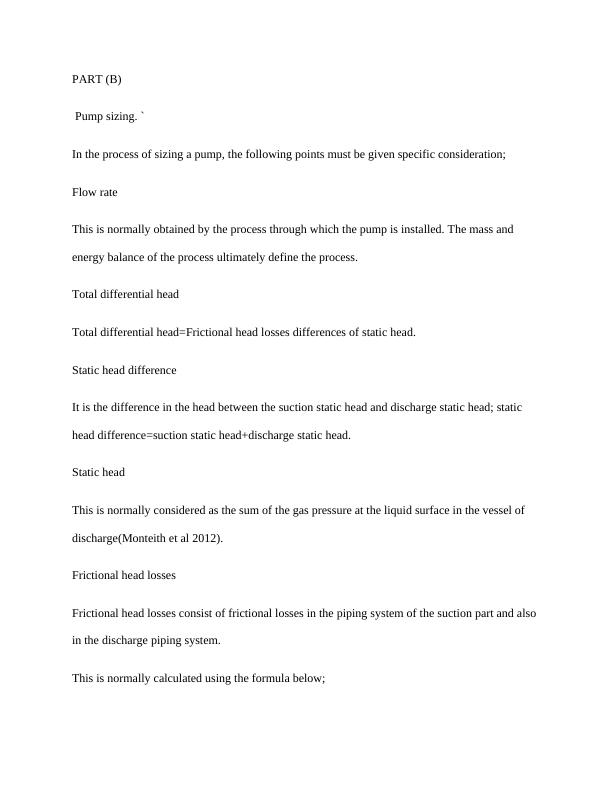Pump Sizing and Flow Rate Calculation in Construction Technology
Designing hydraulic services for a proposed office development in South Brisbane, including sewer and stormwater systems.
8 Pages924 Words432 Views
Added on 2023-06-04
About This Document
This article discusses the process of sizing a pump in construction technology, including factors such as flow rate, total differential head, static head difference, and frictional head losses. It also covers the calculation of flow rate and head pressure for an apartment building. The article includes relevant formulas and calculations.
Pump Sizing and Flow Rate Calculation in Construction Technology
Designing hydraulic services for a proposed office development in South Brisbane, including sewer and stormwater systems.
Added on 2023-06-04
ShareRelated Documents
End of preview
Want to access all the pages? Upload your documents or become a member.
Pump and Pipe Sizing Calculation for Chiller Water System
|5
|1140
|375
CHE3040 Operations Laboratory Assignment
|5
|1620
|452
EGB360 Plant and Process Design Question and Answer 2022
|3
|519
|16
Pump System Design - Task 1-5
|14
|1189
|440
Physics Assignment-2 | Task Report | Doc
|7
|1296
|35
Laminar and Turbulent Pipe Flow: Introduction, Method, Results
|19
|3534
|172



